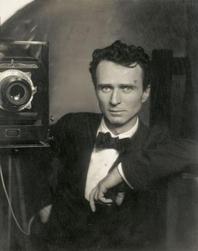
Edward Steichen
DIRECTOR
Edward Steichen was a key figure of twentieth-century photography, directing its development as a prominent photographer and influential curator. During World War I, he directed aerial photography for the Army Expeditionary Forces. He renounced painting shortly thereafter, along with the vestiges of Pictorialism, and adopted a modernist style. He served as chief photographer for Condé Nast from 1923 to 1938 while also doing freelance advertising work. Commissioned a lieutenant commander in 1942, Steichen became director of the U.S. Naval Photographic Institute in 1945; there he oversaw combat photography and organized the exhibitions Road to Victory and Power in the Pacific. He was director of photography at the Museum of Modern Art from 1947 to 1962, and was responsible for more than fifty shows, including The Family of Man in 1955, the most popular exhibition in the history of photography. Steichen received innumerable awards and honors, including Knighthood in the French Legion of Honor, an Honorary Fellowship in the Royal Photographic Society, the Distinguished Service Medal, the Art Directors Club of New York Award, U.S. Camera Achievement Award for "Most Outstanding Contribution to Photography by an Individual," (1949) and the Presidential Medal of Freedom (1963).
-
When was
Edward Steichen born?
Edward Steichen was born on Thursday, March 27, 1879
-
Where was
Edward Steichen born?
Edward Steichen was born in Luxembourg
-
How old was
Edward Steichen when they died?
Edward Steichen was 94
-
When did Edward Steichen die?
Edward Steichen died on
Sunday, March 25, 1973 -
How tall is Edward Steichen?
Edward Steichen is 6'(1.83m)
Follow Us